Development In Biotechnology : From Synthesis Of Protiens To MicroChromosomes
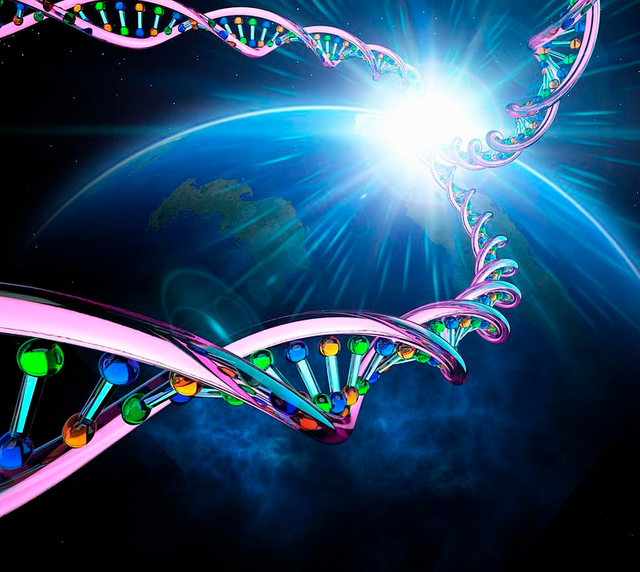
Man has long learned to synthesize the most complex molecules, create new materials, operate with individual atoms. Now scientists are trying to create in the living conditions living organisms, so far the simplest, as well as their separate, but very significant "details."
Modeling the spatial structure of proteins is not an easy task. To speed up complex calculations, researchers use a distributed computing program. This allows you to attract hundreds of thousands of computers, including home computers, to participate in the project. The three-dimensional model of the protein, above which work is performed, appears on the screen as a screen saver.
METHOD OF EXISTENCE OF PROTEINS
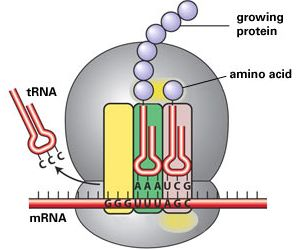
Synthesis of proteins is a simple matter. In the most primitive variant, it is sufficient to heat the mixture of dry amino acids to 150 ° C. After a few hours, chains of polypeptides up to 250 amino acid residues are formed, some of which exhibit weak enzymatic activity. In the bulb it is desirable to add clay: its particles adsorb amino acids and work as a catalyst. To get in this way a primitive living cell, there are essential "trifles" - several billion bulbs and several billion years.
A chain of amino acids is only a semi-finished product. The properties of proteins determine not so much their chemical composition as the three-dimensional structure of their molecules.
To reproduce the process with which a living cell manages in minutes, synthesizing thousands or even tens of thousands of molecules simultaneously, the team of scientists took years. Only the modeling of folding-the folding of a protein molecule into a three-dimensional structure-would take about one hundred years on one computer, and Folding @ Home was used for calculations. It was one of the largest distributed computing projects: more than half a million computers participated at the time of the Top7 settlement. The program runs in the background, almost without affecting the overall performance of the processor.
If you are among the lucky ones who have unlimited access to the Internet, join. The number of vacancies is unlimited. The authors intend to use the technique for the study of proteins (primarily beta-amyloid, accumulation of which occurs in Alzheimer's disease) and for the construction of proteins with prescribed properties required by medicine.
SEMI-SYNTHETIC SEMINAR
The most primitive life is a virus, and the most primitive of known virus-like particles with the long name "cocoon palmoid cadang-cadangoid viraid" consists of only 246 nucleotides. The single-stranded ring of viral VNA does not contain even true genes encoding proteins. Accordingly, they do not have a protein membrane, which allows the introduction of genetic material through an intact cell wall.
The genome of the simplest viruses contains only three genes that code for proteins needed for reproduction: a protein that causes a rupture of the host's cell wall; an enzyme that provides for multiple replication of its genome, and a capsid-envelope protein that covers viral DNA or RNA. An example of such a virus is bacteriophage Qβ, which infects E. coli Escherichia coli. Its RNA consists of approximately 3500 nucleotides. The largest viruses contain two or three hundred genes encoded in a double stranded DNA strand that is several hundred thousand nucleotide pairs long.
Methods for the production of artificial viruses have already been developed: for this, it is necessary to program a sequence of nucleotides, synthesize individual sections of DNA or RNA several tens of nucleotides in length and connect them together.

The first synthetic virus was created by a group of researchers from the University of New York under the direction of Eckard Wimmer. In fact, this virus was semisynthetic in all respects. First, it was not something new, but an exact copy of the natural poliomyelitis virus. Second, the RNA portion or the DNA containing the desired nucleotide sequence is approximately the same as the diskette on which the program for the automated production line is recorded. Reading information, synthesizing new copies of viral RNA and capsid proteins and assembling virus particles is a complex process for which the virus uses enzymes and organelles of the host cell. Purely by chemical methods, it is theoretically possible to synthesize and poliovirus RNA (about seven thousand nucleotides), and each of the capsids entering into the capsid, but to assemble them into a single structure without the help of a living cell is impossible. Try (of course, mentally) to disassemble on the details something simple like a lighter or a ballpoint pen, fold the parts into a box and shake until they get together into the acting product.
For the synthesis of viral RNA, the Wimmer group used natural cell enzymes; for the synthesis of proteins and the assembly of viral particles - extracts from living cells containing the necessary for the synthesis of components and assembly of viruses of the ribosome, enzymes, nucleotides, amino acids, transport RNA, etc.
In November 2003, a research group from the Institute of Alternative Biological Energy Sources under the leadership of the famous Craig Venter (founder and former CEO of Seler Ginomix, famous for its success in deciphering the human genome) announced a new achievement. Scientists managed to reconstruct the bacteriophage φX174, whose ring single-stranded DNA contains 11 genes in a sequence of 5,386 nucleotides. Wimmer took three years to synthesize poliovirus; Venter and his colleagues after a year's training collected the virus in two weeks. Entered into the bacterium, the synthetic virus normally multiplied, and its offspring themselves infected cells of E. coli.
One of the most obvious uses of synthetic viruses is the creation of bacteriophages capable of killing pathogenic bacteria. Such viruses will be the best means of fighting infections, than antibiotics. Completely artificial or genetically modified viruses can be used for gene delivery to chromosomes in genetic engineering and genetic therapy of hereditary diseases.
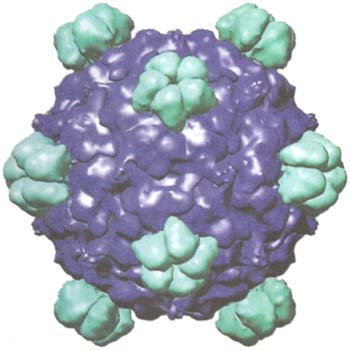
The bacteriophage φX174 (the figure shows its volumetric model) contains only 11 genes. The relative simplicity of this microorganism allowed American scientists, led by Craig Venter, to "assemble" it in the laboratory from individual "details".
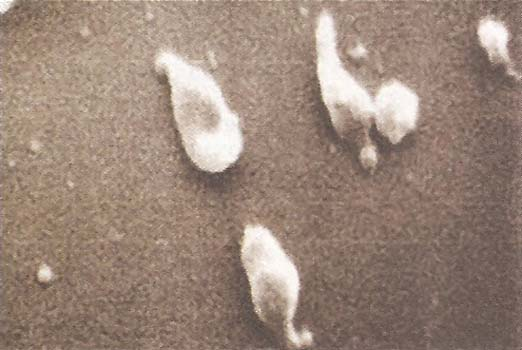
The microorganism Mycoplasma genitalium, presented in a photograph taken with an electron microscope, contains only 517 genes, of which only 300 are critical for survival in the laboratory. It was this organism that became the prototype of the synthetic "minimal cell", on the creation of which scientists work.
MINIMIZED BACTERIA
Now Venter and his colleagues, including Nobel laureate Hamilton Smith, are working on the creation of an artificial microorganism based on Mycoplasma genitalium, a conditionally pathogenic urinary tract. The chromosome of the middle bacterial cell contains two to four thousand genes. The genome of M. genitalium consists of 517 genes, 480 of which encode proteins, and 37 - different RNA molecules. The closest relative of M. genitalium, M. pneumoniae, contains the same 480 genes plus about 200 additional. To survive the simplest "version" of the microorganism, these genes are not mandatory. Carefully, one after another, carving out genes from the chromosome of M. genitalium, the researchers found that in its laconic genome, only about 300 genes are really necessary for the existence of the bacteria in the nutrient broth.
SET "MAKE YOURSELF"
Initially, in a two-layer shell of phospholipids isolated from chicken eggs, the researchers introduced homogenized cellular contents of Escherichia coli (with the exception of the chromosome and plasmids). In addition, a virus derived from the virus, which provides DNA synthesis, was added to the inner environment of the artificial cells. But the phospholipid membrane itself in living cells serves only as a framework of cell membranes, and the two-way transport of substances through membranes provides a complex complex of protein molecules. And for the processes of cell synthesis, the guiding and guiding role of the chromosome is necessary. Without it, the vesicles (microbubbles) of the first model could exist no more than five hours, after which the transport of amino acids and ribonucleotides through the phospholipid wall and the synthesis of proteins and scraps of nucleic acids ceased.
The experimenters added DNA fragments to the vesicle contents. The gene for the green fluorescent protein isolated from the jellyfish is often used as a marker: if cells are illuminated, then the transgenic construct is built into the chromosome and additional genes are treated as their own. The second gene, isolated from Staphylococcus aureus, encodes the tubular molecules of the alpha-hemolysin protein. This protein was inserted into the phospholipid bilayer, and the holes formed provided transport of substances through the membrane. As a result, the pseudo-life of artificial cells extended to four days. For their "doom" it was possible to follow the cessation of the glow.
RECIPE GENES
Genetically modified animals, from luminous aquarium fish to goats and cows, milking "humanized" milk with a thousand times increased iron content, have ceased to cause mystical trembling. And even the genetic modification of man is an established fact.
True, before the real possibility of the appearance of subspecies of Homo novus, freed from many shortcomings of Homo sapiens and even adapted for the performance of certain works, is still far away, although in the forecasts of futurists, more or less real improvements are being seriously discussed which would be well introduced into the human body, fiction novels, you can find hundreds of variants of modified people, including clearly humorous ones, like four-armed space fitters or plumbers with fingers replacing spanners.
According to rather cautious estimates, half of all chronic diseases, which each of us has for 50 years, are hereditary in nature. Predisposition to many common diseases, from arthritis to ulcers, is due to a combination of features of more or less common deviations in a variety of genes. Attempts to fix them are hopeless, at least in the foreseeable future.
But many diseases are a consequence of a mutation in a single gene, as a result of which the synthesis of the protein encoded in this gene is violated or completely absent. The probability of a child with one of these diseases can be quite high: familial hypercholesterolemia leading to the development of severe atherosclerosis at an early age, occurs in one person out of 500, sickle cell anemia - in one of the 400 thoroughbred Africans. Less often (about one in a hundred million newborns), there is a progeria - a disease in which a child begins to grow catastrophically quickly in 7-10 years, and after a few years dies of old age. The total probability of a child's birth with one of the known monogenic diseases is about one percent. If we add to this the likelihood that one of the diseases for which the role of a certain modification of a certain gene has been proved to become evident during the course of one's life, it becomes clear why hundreds of laboratories are involved in the development of methods of gene therapy, and hundreds of methods of genetic therapy of various types of malignant tumors, hemophilia, AIDS, cystic fibrosis, hypercholesterolemia, amyotrophic lateral sclerosis and dozens of other diseases.
The best vector (means of delivery) of genes in the DNA of humans and other animals is non-pathogenic or neutralized viruses.
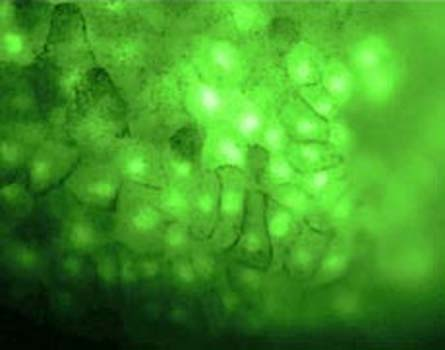
Artificial cells-vesicles, consisting of a phospholipid porous shell, inside which fragments of jellyfish DNA are enclosed, are able to glow with green light. This luminescence serves as a proof of the fact that within the artificial cells there is a protein synthesis.
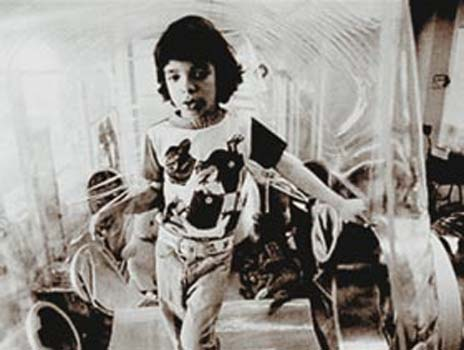
The organism of children with congenital severe combined immunodeficiency is defenseless before any infection, therefore the child can survive only in a sterile box. The American boy David Vetter, born in 1971, spent 12 years in a plastic bubble, after which he received a bone marrow transplant - unfortunately, unsuccessfully. Gene therapy gives such children hope for recovery.
In the syndrome of severe combined immunodeficiency (TKID), due to a violation of the synthesis of the adenosine deaminase enzyme, adenosine and deoxyadenosine accumulate in the body, the toxic effect of which leads to the death of T and B lymphocytes. Such patients are called "children in the bladder": without treatment, any infection is fatal for them, and the only way to prolong their life, except for gene therapy, is complete isolation from the outside world in a sterile chamber. The frequency of the disease is about one in a million newborns. The first attempt to treat two girls with TKID was taken in 1990: the adenosine deaminase gene was introduced into the chromosomes of their own T-lymphocytes, the modified cells were multiplied and injected into the bone marrow of the patients. Unfortunately, the only available method of delivering genes to lymphocytes or hematopoietic stem cells - with the help of a retrovirus - in two of a dozen children treated in this way caused blood cancer. However, after a thorough discussion, most experts decided that the risk in this case is justified: the guarantee of death in the absence of treatment is even worse than the likelihood of leukemia.
To deliver therapeutic genes to cells, adenovirus-based constructs are also used (they do not threaten leukemia, but can cause a pronounced immune response and death of cells that have received the therapeutic gene). In diseases of the nervous system (some tumors, Alzheimer's and Parkinson's diseases, multiple sclerosis and other diseases associated with a violation of the synthesis of a certain protein), a neutralized herpes virus can be a good means of gene delivery. He easily infects cells of the nervous tissue and, unlike the "wild" type, does not cause either herpes zoster or encephalitis.
All this sounds promising and at the same time eerie: no matter how viruses, even modified ones, did not lead to undesirable side effects.
There are many non-viral ways of delivering genes to cells. The genes cloned in bacterial plasmids can be injected directly into the tissue by injection. It is possible to bombard skin cells (or, through a cut, deeper tissues) with a gene "gun" with gold microparticles to which DNA patches are attached. DNA segments can be inserted into liposomes that are completely absorbed by the cells, or combined with antibodies specific for proteins of the desired cell type (eg, cancer cells). But with all these methods, only a negligible part of the therapeutic genes falls into the nuclei of the cells, and in the chromosomes such genes are not practically built in - accordingly, the necessary protein is synthesized very briefly.
But why build new genes into old chromosomes? After all, you can build new chromosomes without viruses, gene guns and the like, and already insert them into cells!
MICROCHROMOSOMES FOR MICROORGANISM
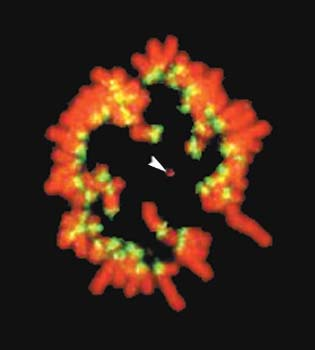
In the photo, the white arrow shows an artificial mini-chromosome (for now, without the true genes encoding proteins). To create it, researchers from Melbourne (Australia) took 10 years. Such mini-chromosomes are considered very promising for delivering the desired genes to the cell.
As in the construction of artificial cells, when researchers create microchromosomes of humans and animals, researchers use two opposite approaches. The first approach is the creation of artificial chromosomes from scratch, using synthesis. Most of the scientific groups working in this field are on this path. Another approach suggests that the basis of artificial chromosomes are elements of the normal chromosome of animals, for example, mice.
Artificial chromosomes of yeast have been used in molecular biology for a long time, mainly for cloning (obtaining multiple identical copies) of the genes of other eukaryotic organisms. The first artificial human chromosomes appeared at the end of the 20th century. Such a chromosome should contain the following service elements: telomeres (end sections that play an important role in DNA replication), points of initiation of replication (doubling of chromosomes) and centromeres (a structure to which the strands stretching pair chromosomes attach when dividing the cell). All the rest is therapeutic genes, one or more, or several copies of one gene, so that the synthesis of the protein encoded in it goes more intensively.
Both in cell culture and in the body, artificial chromosomes behave in the same way as usual: they are doubled in cell division and remain in all the descendants of the original cell. The cell does not make a difference between its own and the "receiving" chromosomes, and the protein encoded in additional chromosomes is properly synthesized.
The creation of artificial chromosomes of a person carrying the correct version of the gene for the treatment of hereditary diseases (or the genes of therapeutic proteins in the case of non-hereditary diseases) is a matter of the near future. A number of researchers regard artificial chromosomes as the most promising method of using gene-modified stem cells for the treatment of human diseases.
Of course, before introducing into the human body cells with an additional pair of chromosomes, this method should be carefully checked in animals. And in general, with the possibilities of genetic engineering and cell therapy, there are both great hopes and serious fears: every discovery, beginning with a cudgel and fire, people managed to use not only for the good, but also for harm to one's neighbor, other God's creatures and the biosphere in whole. But so far the balance of good and evil from the multiplication of knowledge has been positive - let's extrapolate this trend and leave behind the scenes possible negative consequences of the development of biotechnology.
References for Text and Images:
- http://www.proteinsynthesis.org/what-is-protein-synthesis/
- http://plantphys.info/plant_physiology/enzymebasics.shtml
- https://www.khanacademy.org/science/biology/gene-expression-central-dogma/central-dogma-transcription/v/rna-transcription-and-translation
- https://elifesciences.org/articles/32330
- http://www.bio.utexas.edu/faculty/sjasper/bio212/proteins.html
- https://www.thoughtco.com/origin-of-life-theories-1224553
- https://www.thinglink.com/scene/574956231312015361
Support @steemstem and the #steemstem
project - curating and supporting quality STEM
related content on Steemit

This is a subject that particularly fascinates me. Not very easy to understand for most, I am a Venezuelan doctor, and luckily in the university where I study biochemistry is a subject where there is a lot of emphasis. The great etudes of current science are focused in this area. Excente post.
You have collected your daily Power Up! This post received an upvote worth of 3.08$.

Learn how to Power Up Smart here!